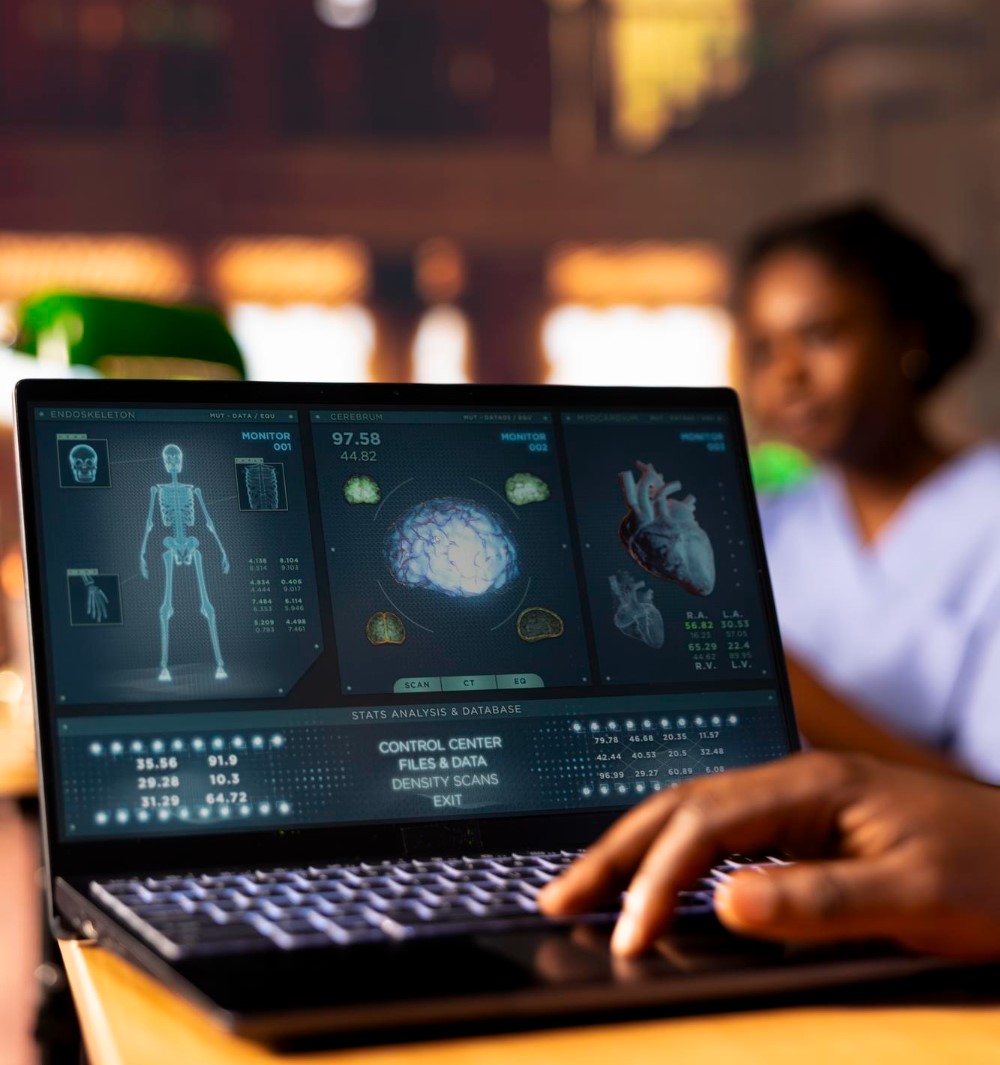
Compare EMR and EHR integration benefits for independent clinics in New York.
What started as simple digital filing systems has transformed into sophisticated networks that connect providers, patients, pharmacies, labs, and insurance companies across entire states. For New York practices specifically, understanding the difference between EMR and EHR integration isn't just about staying current with technology, it's about positioning your practice for financial success.
What Is the Difference Between EMR and EHR?
An Electronic Medical Record (EMR) is essentially a digital version of the paper charts you'd find in a traditional medical office. It contains patient medical and treatment histories within a single practice. Think of it as your practice's internal filing system that's been upgraded from paper to digital format. EMRs help you track patient data over time, identify patients due for preventive visits and screenings, monitor patient parameters like vaccinations and blood pressure readings, and improve overall quality of care within your practice walls.
An Electronic Health Record (EHR) does everything an EMR does, but then extends far beyond your practice. EHRs are designed to share information with other healthcare providers, laboratories, specialists, pharmacies, and even patients themselves. The system creates a more comprehensive view of a patient's health by pulling data from multiple sources and making it accessible across different healthcare settings.
exchanges and coordinate care with other providers.
When you're working with complex billing scenarios – whether it's medical services billing or general practice claims – having the right level of system integration can dramatically impact your reimbursement rates and claim denial frequency.
Which Is Better: EHR or EMR?
There's no universal "better" option – the right choice depends entirely on your practice's specific needs, patient population, and growth plans. However, understanding the advantages and limitations of each system will help you make an informed decision.
EMR systems typically cost less upfront and require shorter implementation timelines. They're simpler to learn and use, which means less disruption to your practice during the transition period. For solo practitioners or very small practices with minimal care coordination needs, an EMR might provide all the functionality you need without paying for features you won't use.
However, EHR systems offer significant advantages that are becoming increasingly important in modern healthcare. They enable seamless information sharing with specialists, hospitals, and other providers in your referral network. They connect with health information exchanges like New York's SHIN-NY network, giving you access to patient records from emergency rooms, other providers, and healthcare facilities across the state. They support better care coordination for patients with chronic conditions who see multiple providers, and they typically include patient portal functionality that improves engagement and satisfaction.
For New York practices specifically, the choice often comes down to how much you coordinate care with other providers and whether you participate (or plan to participate) in value-based care programs, accountable care organizations, or other payment models that require comprehensive data sharing.
Professional medical billing services can help bridge some gaps in basic EMR systems by providing robust reporting and analytics capabilities. However, there are limits to what even the best billing support can accomplish if your clinical system doesn't capture and share information effectively.
What Are the Benefits of EHR Integration?
EHR integration delivers tangible benefits that directly impact both patient care quality and practice profitability. Understanding these advantages helps justify the investment required for implementation.
Improved Care Coordination: When your EHR connects with other healthcare systems, you gain immediate access to patient information from specialists, emergency departments, and other providers. This reduces duplicative testing, prevents dangerous drug interactions, and ensures you have complete information when making treatment decisions. For practices offering specialized services like acupuncture billing services or podiatry billing, being able to share treatment information with referring physicians strengthens those referral relationships.
Enhanced Revenue Cycle Performance: Integrated EHR systems significantly improve billing accuracy and reduce claim denials. When your system can automatically pull diagnosis codes from previous visits, verify patient eligibility in real-time, flag potential coding errors before submission, and ensure documentation meets medical necessity requirements, your clean claim rate increases dramatically. Practices with well-integrated systems typically see denial rates drop by 30-50% compared to those using basic EMRs or paper-based processes.
Streamlined Workflows: Integration eliminates redundant data entry and reduces the time staff spends tracking down information from multiple sources. Lab results flow directly into patient records, medication lists update automatically when prescriptions are filled, and referral information is exchanged electronically rather than through phone calls and faxes.
Better Regulatory Compliance: New York has specific requirements for health information exchange participation, particularly for practices accepting Medicaid or participating in state programs. Integrated EHR systems help ensure compliance with these requirements while positioning your practice for future regulatory changes.
Patient Satisfaction: Modern patients expect their healthcare providers to have access to their complete medical history. When you can review their emergency room visit from last week or check their prescription history before they even mention it, you're providing the kind of seamless experience that builds trust and loyalty.
How Much Does It Cost to Integrate EMR and EHR Systems?
Understanding the true cost of EMR or EHR implementation requires looking beyond the sticker price. Small practices often make decisions based on initial costs without factoring in the total cost of ownership over time.
Initial Implementation Costs: EMR systems typically range from $15,000 to $70,000 for initial setup and configuration, depending on the number of providers and the complexity of your practice. EHR systems with full integration capabilities generally run higher, from $25,000 to $100,000 or more for comprehensive implementations. These figures include software licensing, hardware upgrades if needed, initial configuration, and basic training.
Ongoing Monthly Costs: Most modern systems operate on subscription models with monthly per-provider fees. EMR systems typically charge $300 to $700 per provider monthly, while comprehensive EHR systems range from $400 to $1,000+ per provider. These fees usually include software updates, technical support, and cloud hosting.
Hidden Implementation Costs: The numbers above don't tell the complete story. You'll also face costs related to staff training (20-30 hours per staff member for EMR, potentially double that for comprehensive EHR), productivity losses during the transition period (typically 20-30% reduction for 2-3 months), data migration from your existing system (can range from $5,000 to $20,000+ depending on data volume and complexity), and ongoing optimization and training as staff turnover occurs.
Integration-Specific Costs: Connecting your EHR to health information exchanges, lab systems, pharmacies, and other external systems often involves additional one-time and recurring fees. These can add $5,000 to $15,000 to your initial implementation and $100 to $500 monthly to your ongoing costs.
For specialized practices – whether you're handling pediatric billing, running a speech therapy practice, or operating an addiction counseling center – these costs need to be weighed against the revenue improvements that proper integration delivers.
What Is EMR Integration and Why Does It Matter?
EMR integration refers to connecting your electronic medical record system with other software and systems your practice uses. Even if you choose an EMR over a full EHR, integration capabilities still matter significantly for practice efficiency and financial performance.
Practice Management Integration: Your EMR should seamlessly connect with your scheduling system, billing software, and financial management tools. This eliminates double data entry and ensures information flows smoothly from registration through billing and payment posting.
Lab and Imaging Integration: Connecting your EMR directly to laboratory systems means results flow automatically into patient charts without manual entry. This saves staff time, reduces errors, and ensures you never lose track of pending results.
E-Prescribing Integration: Modern EMR systems must integrate with pharmacy networks and prescription drug monitoring programs. In New York, this includes connecting to the I-STOP database for controlled substance prescriptions. Proper integration helps prevent dangerous drug interactions and ensures compliance with state requirements.
Billing System Integration: Your EMR's integration with billing software directly impacts your revenue cycle performance. Poor integration leads to missing charges, incorrect coding, and delayed claim submission. Strong integration enables automated charge capture, real-time eligibility verification, and comprehensive documentation that supports medical necessity.
Many successful practices partner with professional billing companies that can integrate with virtually any EMR or EHR system. Whether you need comprehensive support from Delon Health or specialized assistance for your practice type, experienced billing partners can maximize your technology investment regardless of which clinical system you choose.
How Do I Choose Between EMR and EHR for My Small Practice?
Making the right decision requires honest assessment of your current situation, future plans, and patient care needs. Here's a framework to guide your evaluation process.
Assess Your Care Coordination Needs: If your practice operates relatively independently with minimal need to share patient information with other providers, an EMR might suffice. However, if you frequently coordinate care with specialists, refer patients to hospitals, or treat complex patients who see multiple providers, EHR integration becomes essential.
Consider Your Patient Population: Practices serving elderly patients with multiple chronic conditions benefit significantly from EHR integration because these patients typically receive care from numerous providers. Similarly, if you treat patients with behavioral health needs or other conditions requiring coordinated care, comprehensive integration delivers better outcomes and reduces liability risks.
Evaluate Your Growth Plans: Are you planning to add providers, expand to multiple locations, or join larger healthcare networks? If so, invest in EHR capabilities from the beginning. The cost of migrating from EMR to EHR later is substantially higher than implementing EHR initially.
Understand New York-Specific Requirements: New York has invested heavily in health information exchange infrastructure. If you accept Medicaid, participate in state programs, or plan to join value-based payment arrangements, EHR integration with state networks isn't optional – it's required.
Calculate the True ROI: Don't just compare sticker prices. Calculate the potential revenue improvements from reduced denials, faster claim submission, and better documentation. Factor in the value of staff time saved through automation. Many practices find that EHR integration pays for itself within 18-24 months through improved financial performance alone.
What Are Common EMR and EHR Integration Challenges?
Understanding potential obstacles helps you prepare properly and avoid costly mistakes during implementation.
Data Migration Issues: Moving historical patient data from old systems to new ones is consistently one of the biggest implementation challenges. Data formats don't align perfectly, information gets lost in translation, and historical documentation may not transfer cleanly. Plan for extensive data validation and accept that some manual cleanup will be necessary.
Interface Compatibility Problems: Even when vendors promise seamless integration, connecting different systems often requires custom interface development. Laboratory systems, imaging equipment, and specialty software may require additional work to communicate properly with your EMR or EHR.
Workflow Disruption: New systems require new workflows. Staff members who have performed tasks the same way for years must learn entirely new processes. This learning curve temporarily reduces productivity and can generate significant resistance if not managed properly.
Training Inadequacies: Most implementations fail not because of technology problems but because staff never fully learn to use the system properly. Insufficient training leads to workarounds, inconsistent documentation, and failure to use features that could dramatically improve efficiency.
Ongoing Maintenance Requirements: Integration isn't a one-time project. As systems update, interfaces break. As regulations change, configurations need adjustment. As staff turns over, new employees need training. Budget for ongoing support and optimization – it's not optional.
These challenges are exactly why many practices work with experienced partners who handle both the clinical technology and the revenue cycle. Professional billing services can manage the financial side while you focus on clinical implementation.
How Does EHR Integration Improve Patient Care Quality?
Beyond operational efficiency and financial benefits, EHR integration delivers measurable improvements in clinical outcomes and patient safety.
Reduced Medical Errors: When providers have access to complete medication lists, allergy information, and prior treatment history from all sources, the risk of dangerous drug interactions, duplicate therapies, and allergic reactions decreases significantly. Studies show that comprehensive EHR integration can reduce medication errors by 50% or more.
Better Chronic Disease Management: Patients with diabetes, heart disease, or other chronic conditions benefit enormously when all their providers can see the complete picture. Lab trends become obvious, medication adjustments by specialists are immediately visible, and care gaps are easier to identify and close.
Improved Preventive Care: Integrated systems can automatically flag patients due for cancer screenings, vaccinations, or other preventive services based on data from all their healthcare encounters. This improves population health management and helps practices succeed in value-based payment models.
Enhanced Care Transitions: When patients move between settings – from hospital to home, from specialist to primary care, from emergency department to follow-up – integrated EHRs ensure critical information travels with them. This dramatically reduces rehospitalization rates and improves outcomes during vulnerable transition periods.
More Informed Decision Making: Having access to complete patient histories, including care received elsewhere, enables better clinical decisions. You're not making treatment choices based on incomplete information or relying solely on patient recall of their medical history.
For specialized practices offering services like occupational therapy or DME supplies, the ability to coordinate with referring physicians and share treatment progress enhances both care quality and referral relationships.
How Do EMR and EHR Systems Affect Medical Billing?
The connection between your clinical documentation system and your billing performance is direct and significant. Understanding this relationship helps justify technology investments and explains why many practices benefit from professional billing support.
Automated Charge Capture: Integrated systems automatically generate charges based on clinical documentation, reducing missed charges and ensuring nothing falls through the cracks. This alone can recover 2-5% of revenue that typically goes unbilled in practices with poor integration.
Improved Documentation Quality: Modern EHR systems include templates and prompts that help providers document at the level of specificity required for optimal reimbursement. Better documentation supports higher-level E&M codes, justifies medical necessity, and reduces the risk of downcoding or denials.
Real-Time Eligibility Verification: Integration with payer systems allows verification of patient insurance eligibility and benefits at the time of service. This reduces claim denials due to eligibility issues and allows collection of copays and deductibles before patients leave.
Reduced Coding Errors: When coding software integrates directly with clinical documentation, it can suggest appropriate codes based on the provider's notes, flag potential errors, and ensure compliance with current coding guidelines. This dramatically reduces denials and audit risk.
Faster Claim Submission: Integrated systems can submit claims electronically within 24-48 hours of service rather than the 7-10 day cycle common in practices with poor integration. Faster submission means faster payment and better cash flow.
Comprehensive Denial Management: When claims are denied, integrated systems help identify patterns, track resubmissions, and ensure systematic follow-up. This can recover 60-80% of initially denied claims compared to 20-30% recovery rates in practices without good systems.
These billing performance improvements are why even practices with excellent clinical systems often partner with professional billing companies. The expertise and technology that companies like Delon Health bring to revenue cycle management complements clinical technology investments and maximizes financial returns.
Conclusion
Ready to explore how the right combination of clinical technology and billing expertise can transform your practice? Whether you're evaluating EMR versus EHR options, planning an implementation, or looking to maximize your existing systems, having the right partners makes all the difference.
Visit Delon Health to discover how we help New York practices optimize their technology investments while maximizing revenue cycle performance. From specialized support for unique practice types to comprehensive billing solutions, we ensure your technology choices support both better patient care and stronger financial results.









